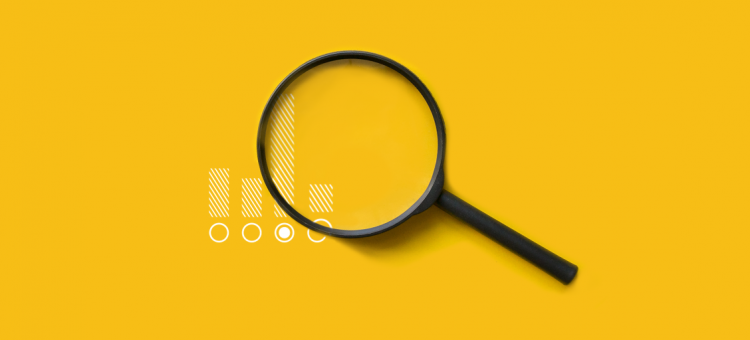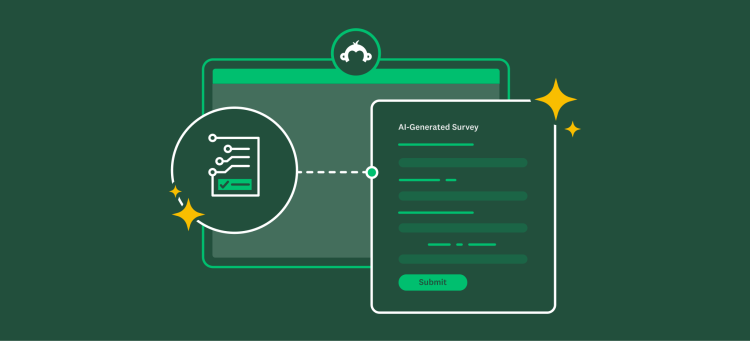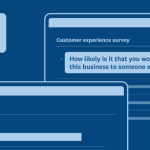You know us as a developer of survey solutions but did you know that we use our own software to create and send hundreds of surveys every year? We partner with news organizations, including New York Times, Fortune, CNBC, and Axios to get a pulse on issues affecting small businesses and national politics, as well as partner with businesses such as HubSpot for market insights. Our team of research scientists collaborate with stakeholders on these surveys every day. It’s collaboration and teamwork that help produce the survey results that drive positive change in business and society. I asked Erin Pinkus, a senior research scientist here at SurveyMonkey about collaboration and teamwork and how she approaches survey analysis. Here’s our interview:
Erin, what are the first things you do when you embark on survey projects?
First off, make sure you don’t already have the information you need from a survey you conducted recently. If you have a gap in information, I’d suggest getting a team together to align on the goal for the survey. Having a goal helps to ensure that you’re getting insightful data you and your stakeholders can actually use. If the goal is to understand what value customers get out of a quarterly event, have the survey questions focus on exactly that. Ask attendees about their experience at last quarter’s event.
Let’s say you’re less than familiar with the topic. In this case, it’s important that you have a subject-matter expert involved so that the questions make sense.
I recommend involving people on the team early on in the process to make sure everyone is aligned on the goal(s) of the survey. It can also be easy to overlook some question or topic area that is necessary for your analysis when you’re very close to a project. Having others on the team can potentially uncover blindspots in the survey before you collect any data.
What’s the ideal length of surveys?
It might be tempting to create a long and broad set of questions so you cover a lot of ground in a single survey, but you run the risk of losing focus and ultimately exhausting your respondents to the point where they drop out altogether. Striking a good balance between survey length and addressing the different goals you and your stakeholders may have can be difficult at times but is important, particularly from a respondent’s perspective. Colleagues on my team found through their research that people are less likely to give feedback in the future if they’ve previously had a bad survey experience.
Being in the loop as to what surveys your teammates are working on, especially if you’re sending surveys to the same people, is critical. For example, if you’re on a team that’s regularly collecting feedback data to drive customer experience initiatives, your team could be sending multiple surveys at the same time to the same people and that can make for a bad customer experience in itself.
If you’re on a small team and you want to get an expert opinion, SurveyMonkey Genius comes in handy. You can get suggestions for questions and answer options as you’re creating your survey, for example. It’s like having your very own survey expert there to make sure what you’re sending out to potential respondents is a high-quality survey.
When in the survey process should you think about analysis?
You need to be sure you have the right questions included and have enough responses to feel confident that you can make good decisions based on your data. You should be thinking about comparison groups ahead of launching your survey. Check on your responses as the data rolls in and see if you have enough of each subgroup of interest before closing out your survey.
Collaborate as a team for better survey results
Add more seats to your team, collect feedback at scale, and make big impacts.
Now comes the fun part: the actual analysis. Where do you start?
I look for the most interesting findings. Remember those subgroups you were curious about? Start there. See how they compare to each other. You might find an interesting story there or feel inspired to dig deeper into another group.
Take the time to review qualitative feedback in addition to quantitative feedback. In SurveyMonkey some of this is automated for you, which is a great time saver. For example, I use Sentiment Analysis and the word cloud feature together to help get a sense for how respondents answered the open ended questions and to visualize data.
What’s your single piece of advice to teams collaborating on surveys?
Everyone needs to communicate with each other early on, especially if the person writing the survey is not the person analyzing the data. Communication as a team throughout the lifecycle is key.
We always say that teamwork makes the (survey) dream work. As you work within your team to create, send, share, and analyze surveys, I hope some of Erin’s tips will help you drive the results you need to make great impacts.




